Departure Date: May 11 - 17, 2025
Compiled By: Louise Zemaitis
Trip Leaders: Louise Zemaitis, Michael O'Brien
Toll Free: 800.328.8368
Phone: 512.328.5221
Spring in Cape May 5/11/2025-5/17/2025

https://ebird.org/tripreport/371769
Spring is an exciting season for birders in Cape May. Northbound songbirds, waders, seabirds, and others move at a frenzied pace as each pushes toward its particular breeding grounds from eastern forests to coastal beaches to arctic tundra. Meanwhile, other species have just arrived at local breeding sites and are battling out territory boundaries with neighbors, while still others are already tending young in their nests. Crossing paths with all of these species is one of the greatest joys of birding Cape May and requires careful attention to a number of variables, particularly weather conditions and tides.
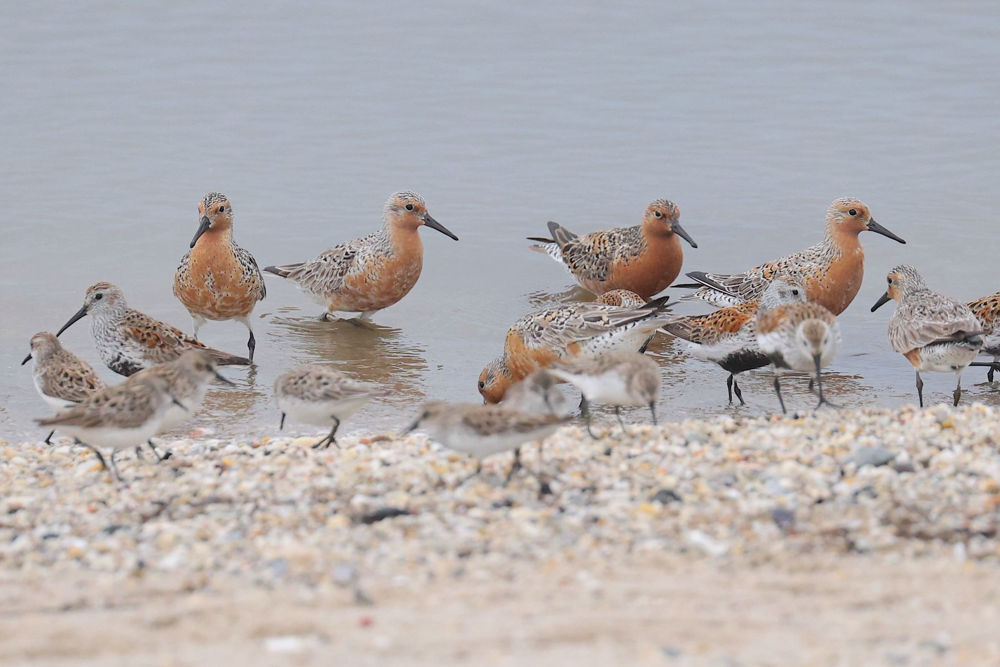
Red Knots, Dunlins, and Semipalmated Sandpipers © Michael O'Brien
On this particular week, prevailing winds were from the east, so if we wanted to catch some songbird migrants, our best chance was on our first morning in the Philadelphia area. So, we began just a short ways from our hotel at John Heinz National Wildlife Refuge. This was a good move, and we found a number of migrant songbirds including what seemed to be a fallout of Gray Catbirds, plus Orchard and Baltimore orioles, Northern Waterthrush, Northern Parula, American Redstart, and Blackpoll Warbler. With the ponds drawn down, a good number of shorebirds were present including a few hundred Least Sandpipers plus excellent comparisons of Greater and Lesser yellowlegs and Spotted and Solitary sandpipers. Swallows were swarming over the ponds with both Tree and Barn swallows actively tending their nests. We were also pleased to see a Warbling Vireo nest but a little disappointed when a female Brown-headed Cowbird flew in and apparently laid an egg.
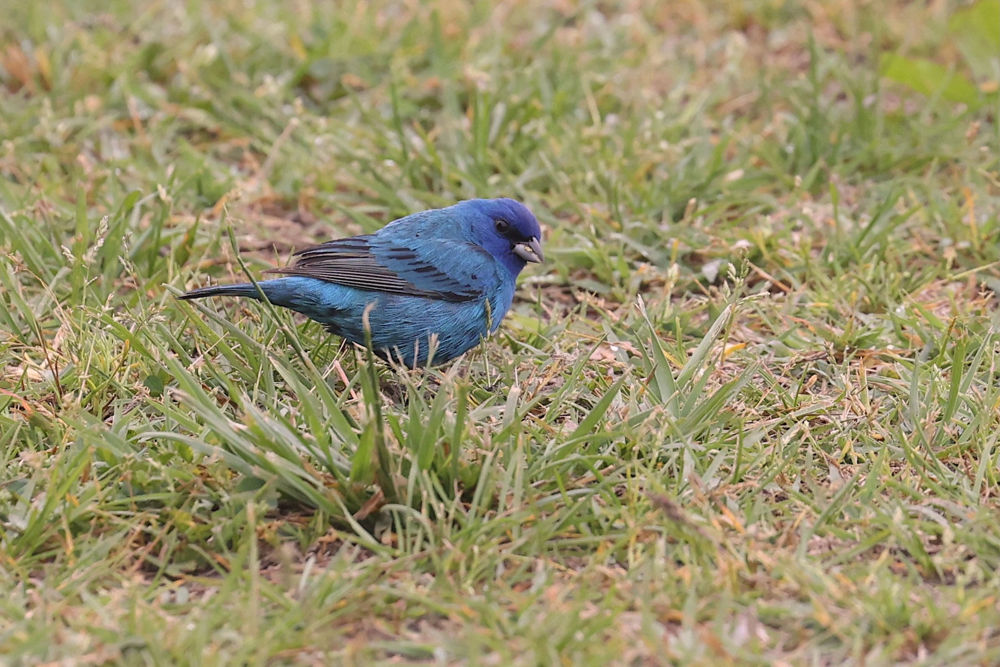
Indigo Bunting © Michael O'Brien
During our time in Cape May we made two visits to Belleplain State Forest, a beautiful area with quiet roads through oak forest interspersed with swamps dominated by Atlantic White Cedar and an understory of Mountain Laurel and Northern Highbush Blueberry. This forest holds a wide variety of breeding birds, and we found Wild Turkey, White-eyed and Red-eyed vireos, Blue-gray Gnatcatcher, Summer Tanager, and a nice list of warblers including Worm-eating, Black-and-white, Hooded, Pine, and Yellow-throated. We will especially remember that magical moment when a Prothonotary Warbler hopped onto the railing at Sunset Bridge, lighting up the forest understory!
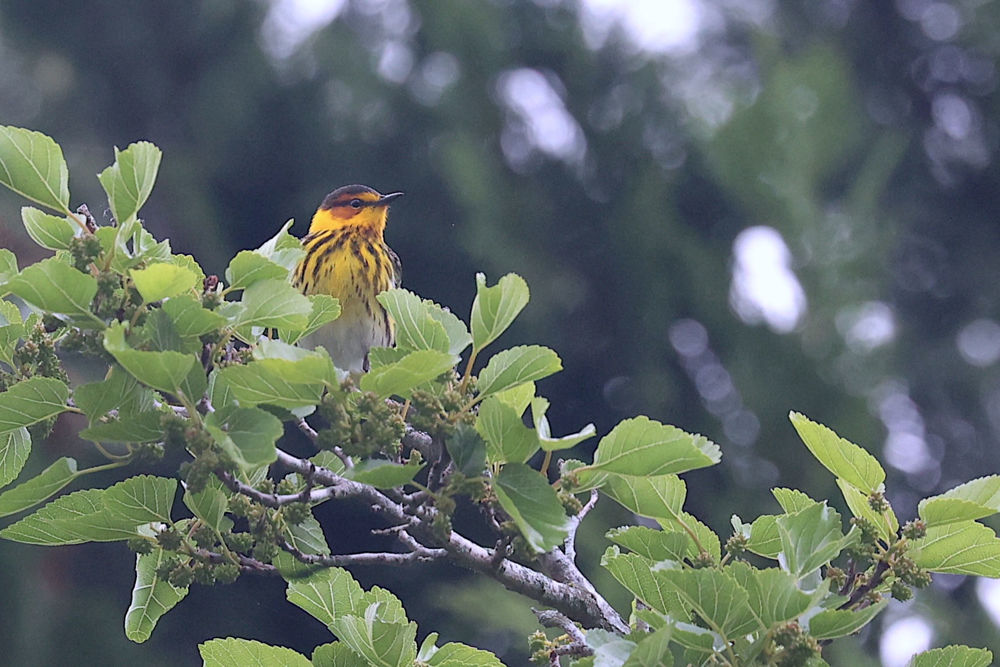
Cape May Warbler © Michael O'Brien
Cape May Point is always a focal point of birding in the Cape May area, with different spots better under different wind conditions. During our first visit, on easterly winds, we spent some time in the dunes scanning offshore for a variety of waterbirds and found Surf and Black scoters, Lesser Black-backed Gull, Black Skimmer, five species of terns, Red-throated Loon, and Northern Gannet. On our next visit, with nearly calm winds, some songbird migrants had moved in, so we focused on wooded areas around Cape May Point State Park and Cape May Bird Observatory and found Great Crested Flycatcher, Swainson’s Thrush, Indigo Bunting, and a dozen warblers including Magnolia, Bay-breasted, Chestnut-sided, and Blackpoll. And no trip to Cape May Point would be complete without a visit to the Purple Martin colony by the lighthouse—always a crowd pleaser! Nearby, a quick stop at Louise and Michael’s West Cape May garden provided nice views of Ruby-throated Hummingbird and a stunning Cape May Warbler.
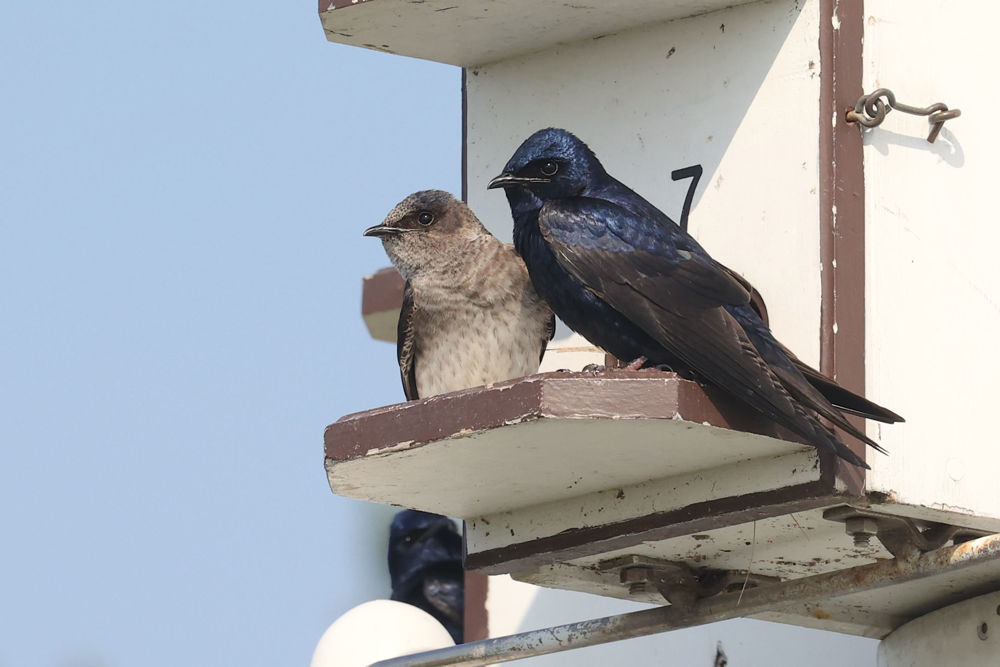
Purple Martins © Michael O'Brien
Another focal point of spring birding in Cape May is a visit to the back bay saltmarshes behind the Atlantic Coast barrier islands. There is no better way to visit this habitat than by boat, so one afternoon, we enjoyed a leisurely cruise aboard The Osprey with Captain Bob Lubberman. The saltmarsh was alive with activity including thousands of Laughing Gulls, scores of Common and Forster’s terns, and seven heron species, all near their nesting colonies. Migrant shorebirds were numerous as well with large flocks of showy Dunlins, Short-billed Dowitchers, and Black-bellied Plovers, along with numerous American Oystercatchers, Willets, and others. With a little perseverance, we eventually had nice looks at Clapper Rail, which nests locally, and also found lingering Brant, Surf and Black scoters, and Common Loon, all migrants headed farther north. And, of course, we saw numerous Ospreys, many on their nests.

Seaside Sparrow © Michael O'Brien
Perhaps the main centerpiece of spring birding in Cape May is a visit to the Delaware Bayshore to witness the famous gathering of Red Knots and other shorebirds feasting on the eggs of Horseshoe Crabs. To catch this spectacle, we had to time our visits around high tide when the peak egg laying occurs and when shorebirds are pushed closest to the beach. We made two visits to see this amazing sight and were blown away both times. Thousands of Red Knots carpeted the beach, sometimes taking to the air in spectacular murmurations before settling back down. Among these were thousands of Semipalmated Sandpipers and Ruddy Turnstones, and hundreds of Sanderlings and Dunlins, all adding to the spectacle. With a little patience, we even found a single White-rumped Sandpiper among the masses. In the adjacent marshes, numerous Seaside Sparrows showed well for us as they sat up and sang their unobtrusive, hissy song. And on a nearby bayshore road, we were pleased to find a handsome Red-headed Woodpecker, one beneficiary of the abundant “ghost forest” along the marsh edge in this region.
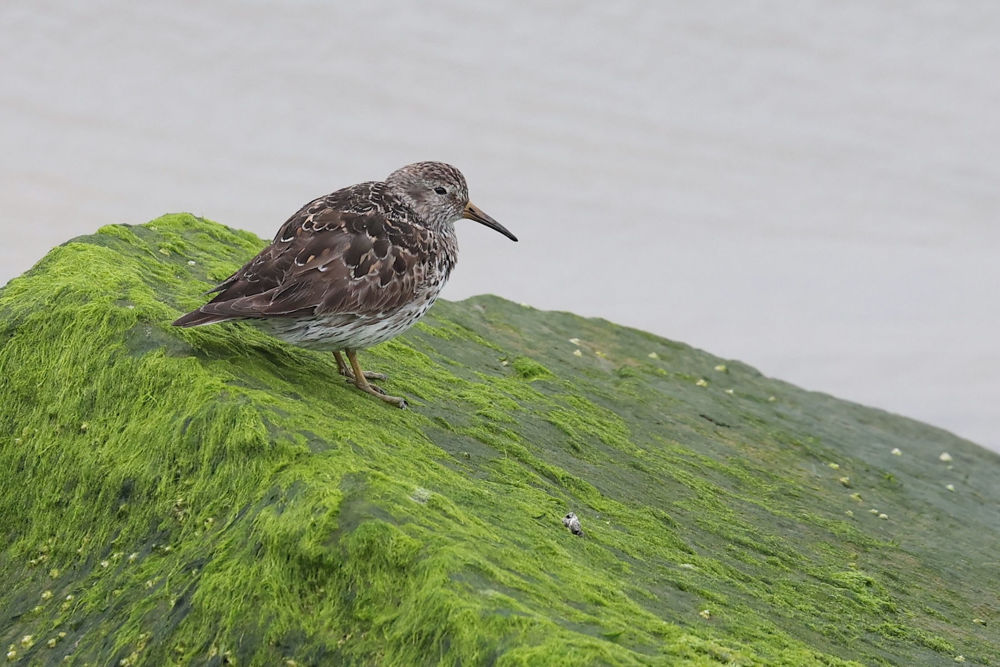
Purple Sandpiper © Michael O'Brien
Another highlight of any visit to Cape May in spring is a stop at the Ocean City Welcome Center to have up-close views of a thriving colony of herons, egrets, and ibises. As timing worked out, we left this visit for the last day of our tour on our return to Philadelphia. Our visit was delayed a few minutes by a wild thunderstorm that surged through the area. As this storm approached, we pulled off of the highway to Shell Bay Landing and sat in the vans as we watched the skies blacken, followed by about ten minutes of torrential rain—a real highlight all itself! After the storm eased up, we made our way to the Welcome Center and enjoyed wonderful views of many birds on the nest, including Black-crowned and Yellow-crowned night herons, Little Blue Heron, and White and Glossy ibis. A fine way to cap off an exciting week of birding in Cape May!

Little Blue Heron © Michael O'Brien
A complete list of the birds recorded on our tour can be found at: https://ebird.org/tripreport/371769
Read the description for the next departure of this tour.
View Louise Zemaitis's upcoming tour schedule.
View Michael O'Brien's upcoming tour schedule.
ITINERARY
Day 1, May 11: Arrival in Philadelphia; group meeting at 6:00 pm; dinner at Lehman’s Tavern.
Day 2, May 12: John Heinz National Wildlife Refuge at Tinicum; Belleplain State Forest including picnic lunch and birding at Lake Nummy, then brief stop at the field office; dinner at Blue Pig Tavern, Congress Hall.
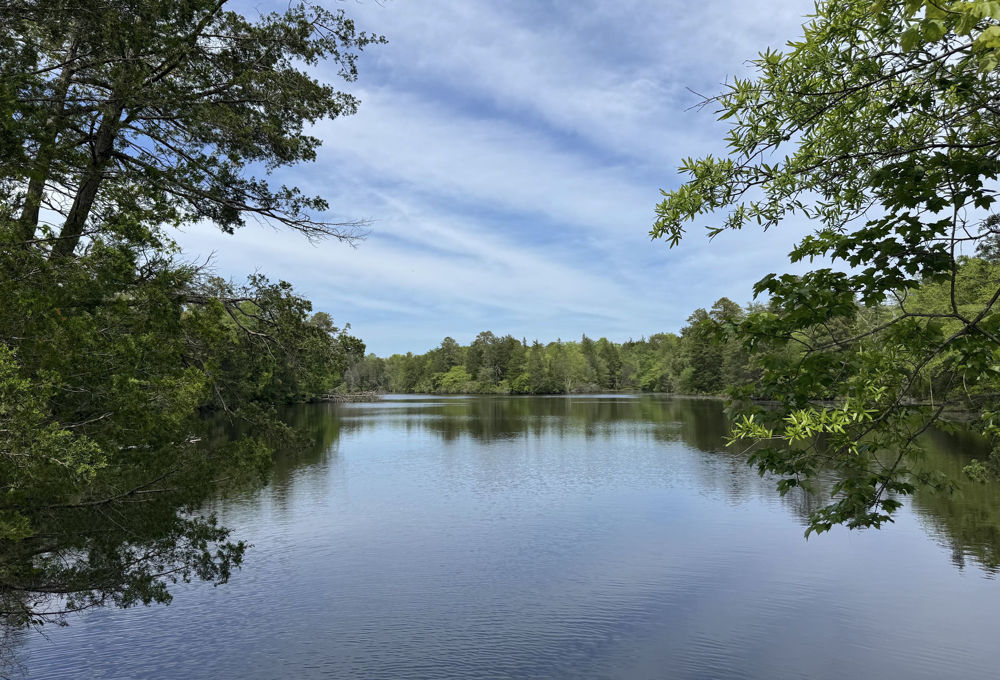
Lake Nummy, Belleplain State Forest © Michael O'Brien
Day 3, May 13: Cape May Point including the Coral Avenue Dune Crossing Spring Watch and Cape May Point State Park; Louise and Michael’s garden (West Cape May); Cook’s Beach; Wildwood including North Wildwood Seawall and Two Mile Landing. Dinner at Sapore Italiano, West Cape May.
Day 4, May 14: Sunset Beach; Miami Beach (Villas); Dennis Creek Wildlife Management Area (Conswell Road); Saltmarsh Safari to Cape May Harbor and Jarvis Sound on The Osprey with Captain Bob Lubberman; dinner at Oyster Bay, Cape May.
Day 5, May 15: Belleplain State Forest including Sumner Avenue, field office, Sunset Road, Frank’s Road, and Lake Nummy (birding and picnic lunch); Cook’s Beach; dinner at Freda’s Café, Cape May.
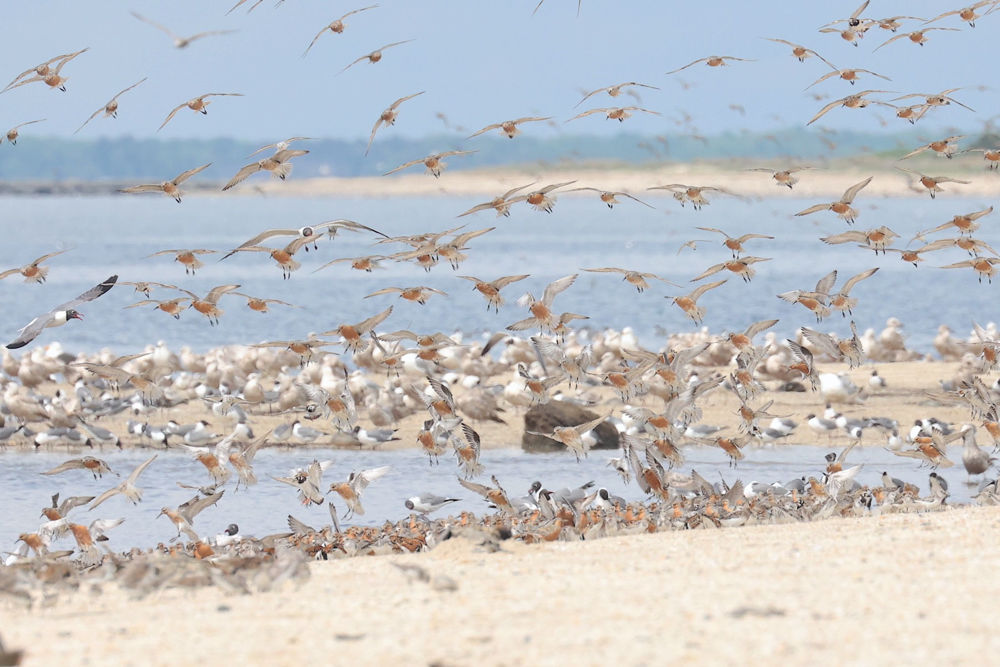
Shorebirds at Cook's Beach © Michael O'Brien
Day 6, May 16: Cape May Point including CMP State Park and Cape May Bird Observatory; Louise and Michael’s garden (West Cape May); Shell Bay Landing (where we pulled off to ride out a massive thunderstorm); Ocean City Welcome Center rookery; return to Philadelphia; dinner at Stinger’s Waterfront, Ridley Park.
Day 7, May 17: Departures from Philadelphia.

